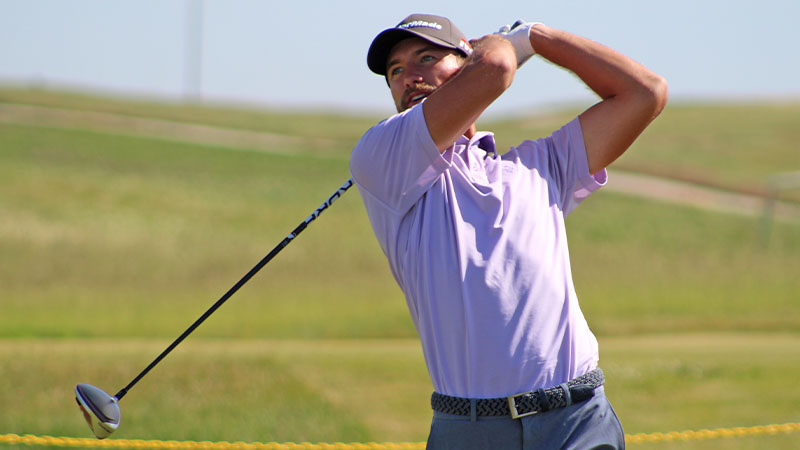It was his first Open. It was his first PGA Tour event.
And for Eric Dietrich, the former UConn star from Cheshire, this past week at Pebble Beach was a major learning process.
“I picked a tough one,” he said.
Dietrich was Connecticut’s lone representative at the 119th U.S. Open, one of a dozen state players who advanced to Sectional Qualifying. He medalled at the Wine Valley Golf Club, in Washington, two weeks ago, 11 under par for two rounds.
And though the Open was a different scoring story, it convinced him that he belongs at golf’s highest level, and taught him a great deal about major-championship set-ups. Dietrich shot 83-75 and missed the cut, along with, among others, major winners Keegan Bradley, Bubba Watson and Mike Weir. He made three birdies on day one, four on day two, but it was “others” that hurt, and taught the most lasting lessons.
“You simply have to hit fairways and hit greens. If you were in the rough, you had to run it up to greens. There was no no flying shots onto the green. You were just kind of hacking it out and hoping the club face wasn’t shutting down and pulling it low left.”
The rough along fairways, as punishing as it was, was not as costly in most cases as four-inch rough around the greens, Dietrich said.
“Imagine a ball sitting down two inches into that rough. Now there’s two inches under it. And a lot of times the green was so back to front or sloped to the ocean, you had to hit these high flop shots to get it to be able to stop where you want it to stop. It’s so easy to go under the ball when you have the club face open like at. You have to be so precise. You saw Patrick Reed and what he did on 18 . [Reed fluffed a shot, then broke his wedge over his knee]. No one’s immune to that. It’s so easy to do that when the rough is like that. The ball is sitting down but it’s sitting up. You don’t see that often. Hard to be ready for that.”
Dietrich will have none of that rough today when he attempts to qualify for this week’s Travelers at Ellington Ridge Country Club. “I held the course record there at one point, so I’m looking forward to it.”
At Pebble Beach he learned that playing major championship golf, and especially U.S. Open golf, is study in itself. And he chuckled at those who said the course set-up this year had lost the U.S. Open’s “disaster-prone” quality. “I think the USGA did a really good job of setting it up this year,” he said. “But it was disaster-prone for sure. I had a rough first round. I made a lot of stupid mistakes. I actually drove the ball pretty well but it was my irons that cost me. I left myself in pretty bad spots.”
You could see that veteran players knew better, Dietrich said. “The guys with experience are going to find themselves up top,” Dietrich said. “It’s not a tournament you see many guys who are just out there really competing. You’ve got to learn.” Dietrich said that the USGA kept the fairways soft, watering them at times, which made Pebble's slightly more than 7000 yards play longer. But the real test was around the putting surfaces.
With most tournaments, he said, there may be a place you can not miss around a green and still recover. At the Open, with Pebble’s small sloping greens and gnarly rough surrounding them, it was a much stricter calculation. “Around the greens, there were about six places you could not miss, and one place you could. There were holes where if you missed in a certain spot you might not be able to keep a recovery shot on the green.”
Nerves were not a factor, he said, though he acknowledged it was a shock to play in front of Open crowds. “I told myself before the round to play smart but when you have hundreds of thousands of people watching you you kind of get caught up trying to hit the perfect shot. You don’t need to hit the perfect shot. I didn’t feel that nervous. But I’d never had to make a four-footer in front of 5,000 people before either.”
All part of a very steep learning curve.
“I mean I got out there and I said I can hang with these guys, and I left with a lot of confidence that I can, but I learned just how important it is not to make those mistakes. You learn where to hit it and where to miss it.”
The UConn economics grad recently qualified for the Mackenzie Tour—PGA Tour Canada and was T34 in May’s Canada Life tournament. At Ellington Ridge he’ll be with others that share his professional dream, including two-time Connecticut Amateur Champion Zach Zaback, also a Mackenzie Tour qualifier.
For sure, the rough they face will not be Open rough.








